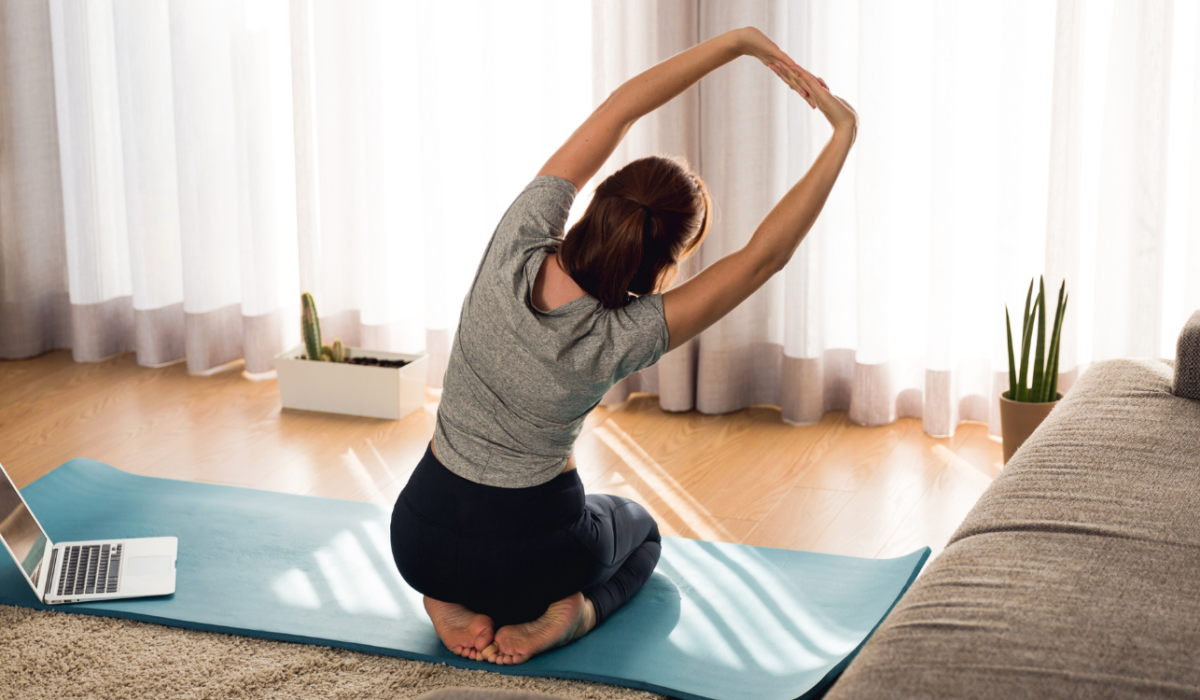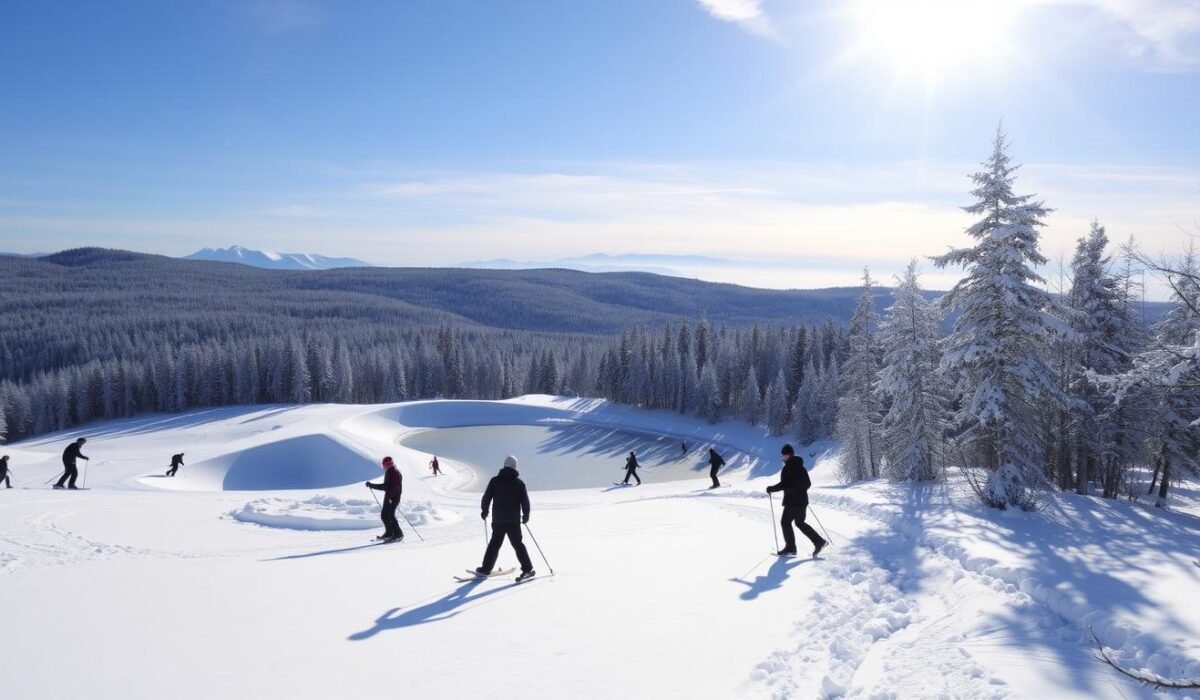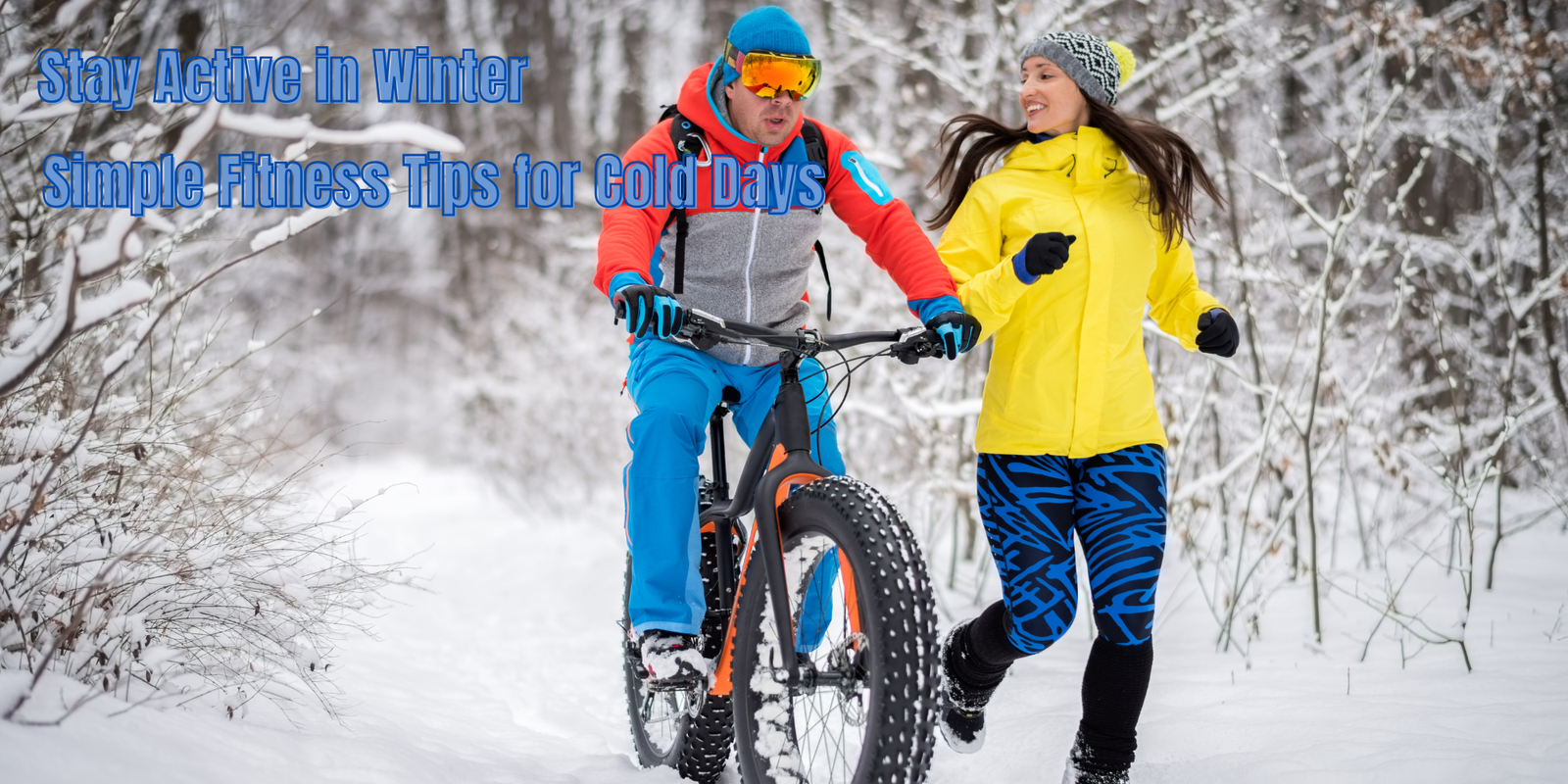Did you know physical inactivity goes up by 25% in winter? This fact shows how important it is to stay active and healthy, even when it’s cold. As the days get shorter and colder, it’s easy to want to stay inside. But, exercising regularly has many benefits that can help us stay strong all winter.
In this article, we’ll share easy ways and must-have gear to keep you fit and full of energy in winter. We’ll talk about setting up a workout area at home and adding winter sports to your routine. By the end, you’ll know how to beat the winter blues and come out healthier and more resilient.

Key Takeaways
- Physical inactivity increases by 25% during the winter months, underscoring the need to stay active
- Regular exercise offers numerous benefits that can help you thrive throughout the winter season
- Practical strategies and essential equipment can help you overcome the challenges of staying fit in the colder weather
- Creating a dedicated indoor workout space and incorporating winter sports into your routine are effective ways to stay active
- Maintaining a positive mindset and building consistent workout habits are crucial for winter fitness success
Understanding Winter’s Impact on Exercise Motivation
As winter comes, days get shorter and colder. Many struggle to keep up with their exercise plans. Understanding how winter affects motivation is key to staying active all year.
Psychological Effects of Shorter Days
Less daylight in winter can affect our mood and energy. Seasonal Affective Disorder (SAD) makes it hard to exercise. Feeling tired and unmotivated can make us want to stay on the couch.
Common Barriers to Winter Exercise
- Bad weather, like snow and cold, makes outdoor exercise hard.
- Wanting to stay inside can lower our activity levels.
- Comfort foods and holiday treats can hurt our healthy eating plans.
Seasonal Affective Disorder and Physical Activity
For those with Seasonal Affective Disorder (SAD), not moving enough can make symptoms worse. Exercise helps, but SAD makes it hard to start and keep up with workouts.
| Motivation Strategies | Combating Laziness Tips | Beating Procrastination |
|---|---|---|
| Set achievable goals | Create a designated workout space | Establish a routine |
| Find enjoyable activities | Incorporate variety into your workouts | Prioritize exercise in your schedule |
| Enlist the support of friends and family | Celebrate small victories | Leverage accountability partners |
Knowing the challenges of winter can help us stay motivated. From fighting SAD to overcoming common obstacles, being proactive about fitness in winter can kickstart a healthy new year.
Essential Home Workout Equipment for Winter Fitness
Winter can make it hard to keep up with your workout routine. But, with the right gear, you can stay fit at home. Here are the must-haves for your home gym.
- Resistance Bands: These bands are great for a full-body workout. They work your arms, shoulders, legs, and glutes.
- Dumbbells: Adjustable dumbbells offer many strength-training options. They’re perfect for home workouts without taking up much space.
- Yoga Mat: A good yoga mat is essential for floor exercises. It helps with stability and grip during your workouts.
- Stability Ball: Also known as a Swiss ball, it’s great for core strength and balance. You can even use it as a chair for desk workouts.
These home gym essentials are super versatile. They help you build muscle, improve flexibility, and stay fit. They’re perfect for a variety of workouts at home, keeping you active all winter.
| Equipment | Benefits | Ideal For |
|---|---|---|
| Resistance Bands | Versatile, portable, and effective for strength training | Full-body workouts, targeting multiple muscle groups |
| Dumbbells | Allows for targeted, controlled strength-building exercises | Strength training, muscle toning, and indoor workouts |
| Yoga Mat | Provides cushioning and traction for floor-based exercises | Yoga, Pilates, and other at-home workouts |
| Stability Ball | Challenges core stability and balance, making workouts more engaging | Core strengthening, balance training, and functional movements |
Adding these home gym essentials to your winter routine helps keep you fit and healthy. Stay active and on track with your fitness goals, even when it’s cold outside.
Indoor Workout, Winter Sports, Tips on Overcoming the Laziness
When it gets colder, it’s hard to want to exercise. But, staying active is key for our health and mind. Setting up a special indoor workout area can help you reach your fitness goals.
Creating a Dedicated Indoor Workout Space
Having a specific spot for exercise can make it easier to stay consistent. Pick a quiet, bright area where you can move freely. Get home exercise routines gear like bands, dumbbells, or a yoga mat to keep your workouts interesting.
Time Management Strategies for Winter Exercise
Shorter days and busier lives can make it tough to exercise. Use fitness hacks like putting workouts in your calendar and setting reminders. Find the best times to work out and make it a must-do part of your day.
Building Consistent Workout Habits
Consistency is key to beating laziness and staying active in winter. Start with short, daily workouts, like 10-15 minutes. As you get better, increase the time and effort. Remember, it’s okay to miss a day sometimes. What matters most is keeping up with your routine.
With a dedicated workout area, smart time management, and consistent habits, you can beat the winter blues and stay in shape all season.
Effective Bodyweight Exercises for Limited Space
Bodyweight exercises are a great way to stay fit in winter. They’re easy to do at home, perfect for small spaces. They help build strength, boost endurance, and raise your heart rate.
The push-up is a classic and effective exercise. It works your chest, shoulders, and triceps. You can make it harder by lifting your feet or adding jumps.
The squat is another key exercise. It strengthens your legs and glutes. It also works your core. Try different types of squats to work different muscles.
- Lunges: This exercise targets your quadriceps, glutes, and hamstrings, and can be performed with or without weights for added intensity.
- Planks: A classic core-strengthening exercise, planks challenge your abdominal muscles and improve overall stability.
- Mountain Climbers: This dynamic move combines cardiovascular and strength training, working your core, shoulders, and legs.
It’s important to keep proper form and increase the challenge as you get stronger. Mixing these exercises into your routine will keep you fit all winter.
“Bodyweight exercises are a simple and effective way to stay active during the winter months. With a little creativity, you can get a full-body workout right in your living room.”
Winter-Specific Warm-Up Routines and Safety Measures
When it gets colder, it’s important to focus on the right warm-up and safety for your cold weather workouts. Getting your body ready for indoor exercise can prevent injuries and make your workout better, even on the coldest days.
Proper Indoor Exercise Temperature Control
It’s important to find the right temperature for indoor workouts in winter. The room should be cool enough to avoid getting too hot, but not so cold that it slows you down. Aim for a temperature between 65-75°F (18-24°C) for comfort and best performance.
Joint Protection During Cold Weather
Cold weather can make your joints stiff and more likely to get hurt. Add dynamic stretches and mobility exercises to your warm-up to get blood flowing and keep joints lubricated. This helps you move better and lowers the chance of injury during your fitness hacks.
Pre-workout Mobility Exercises
- Arm Circles: Slowly circle your arms forward and backward to loosen the shoulders and upper back.
- Leg Swings: Gently swing your leg forward and backward to mobilize the hips and ankles.
- Torso Twists: Rotate your torso from side to side to increase spinal flexibility.
- Calf Raises: Perform a series of controlled calf raises to wake up the lower legs.
By focusing on these key elements of winter exercise prep, you can ensure a safe and effectivecold weather workout, no matter the weather outside.
Indoor Cardio Alternatives to Outdoor Running
When winter comes, running outside might not be as fun. But, you don’t have to stop exercising. There are many indoor cardio exercises that keep you fit and active even when it’s cold.
Jumping jacks are a great choice. They make your heart beat faster and work your arms and legs. You can also try high knees or jumping jacks with a twist for more fun.
Burpees are another top pick. They’re a full-body exercise that includes a push-up, jump, and squat. This makes them a great way to burn calories and get stronger.
Stair climbing is also excellent if you have stairs at home or nearby. It’s great for your legs and can be part of your indoor workout routine.
| Exercise | Benefits | How to Incorporate |
|---|---|---|
| Jumping Jacks | Increases heart rate, works arms and legs | Perform 2-3 sets of 20-30 reps as part of a circuit workout |
| Burpees | Full-body workout, burns calories, builds strength | Include 1-2 sets of 10-15 reps in your indoor cardio routine |
| Stair Climbing | Targets lower body, improves cardiovascular fitness | Climb stairs for 10-15 minutes at a time, 2-3 times per week |
Adding these indoor cardio exercises to your winter routine helps keep you fit and motivated. Even when it’s cold outside.

Nutrition Strategies to Support Winter Exercise Goals
As winter comes, staying active can be tough. But, with the right nutrition, you can beat sedentary habits and support your fitness goals. Here are some tips to keep you energized and healthy all winter long.
Immune System Boosting Foods
It’s key to eat foods that boost your immune system in winter. Eat lots of vitamin C-rich fruits and veggies like oranges and leafy greens. Also, add zinc-rich foods like nuts and lean meats to your diet. Don’t forget to include antioxidant-packed foods like blueberries and turmeric in your meals.
Hydration Tips for Indoor Workouts
Drinking water is vital for any workout, especially indoors in winter. Make sure to drink plenty of water before, during, and after your workouts. Adding lemon or lime to your water can make it taste better and offer extra health benefits.
Pre and Post Workout Meal Planning
Good nutrition before and after workouts is crucial. Eat nutrient-dense carbohydrates like whole-grain oats for energy. Include lean proteins like chicken or Greek yogurt to help your muscles recover and grow.
By following these nutrition tips, you’ll be on your way to beating sedentary habits, boosting your immune system, and reaching your fitness goals this winter.
Incorporating Winter Sports into Your Fitness Routine
When it gets cold and snowy, it’s hard to stay active. But, winter sports can make fitness fun and rewarding. Activities like skiing, snowboarding, ice skating, and snowshoeing offer a great workout and keep you engaged.
Winter sports boost your heart health and build strength. Skiing and snowshoeing are great for your endurance. Skiing and ice skating also strengthen your legs, improving your overall strength.
If you’re new to winter sports, start slow and learn proper techniques. Take lessons or join a beginner group to build confidence. Always dress warmly, wearing layers to keep moisture away and stay insulated.
Winter Sports to Try
- Skiing – Whether downhill or cross-country, skiing is a great way to get a full-body workout while enjoying the winter landscape.
- Snowboarding – This fast-paced sport requires core strength and balance, making it an excellent addition to your winter fitness routine.
- Ice Skating – Both figure skating and hockey can provide a challenging cardiovascular workout while improving your coordination and agility.
- Snowshoeing – Exploring the great outdoors on snowshoes is a low-impact way to get your heart rate up and strengthen your leg muscles.
Adding winter sports to your routine keeps you active and lets you try new things. It’s a chance to enjoy the beauty of winter. So, get ready to have fun with winter fitness!

“There is just something special about the chill in the air and the crunch of snow underfoot that makes winter sports so exhilarating.” – Expert Winter Enthusiast
Creating an Accountability System for Winter Fitness
As winter gets closer, it’s hard to keep up with exercise. But, with the right accountability system, you can stay on track. Here are some tips to help you reach your fitness goals during the cold months.
Find a Workout Buddy
Having a workout buddy can really help. Workout buddies offer motivation and friendly competition. They make it harder to miss a workout.
Join an Online Fitness Community
Online fitness communities can change the game. They provide motivation strategies and tips to overcome laziness. Plus, they offer a sense of camaraderie to help beat procrastination.
Utilize Fitness Tracking Apps
Fitness tracking apps are great for accountability. They let you set goals and track your progress. You get feedback in real-time, keeping you on track with your winter workout plan.
It’s important to find what works best for you. Mix different strategies to stay motivated and reach your fitness goals. This way, you can beat winter laziness and stay active all season.
“The only way to keep your health is to eat what you don’t want, drink what you don’t like, and do what you’d rather not.” – Mark Twain
Conclusion
Winter can make it hard to stay active, but it’s crucial for our health. Understanding why we might feel lazy and finding ways to fight it is key. Having the right home workout gear and a dedicated space helps us keep our fitness goals in sight.
Adding indoor cardio and winter sports to our routine can be exciting. It’s also important to warm up right and stay safe while exercising in the cold. Eating well to boost our immune system and energy for workouts is another step towards better health.
Staying active in winter means having a plan and sticking to it. By using the tips from this article, we can make it through the cold months strong. We’ll be ready to enjoy the warmer months even more.
FAQ
What are some effective indoor workout options for staying active during the winter?
Great indoor workouts include bodyweight exercises like push-ups, squats, and lunges. Cardio options like jumping jacks, high knees, and stair climbing are also good. You can use resistance bands, dumbbells, or home gym equipment to strengthen and tone muscles.
How can I overcome the psychological barriers to exercise during the winter months?
To beat the winter blues, set specific goals and create a dedicated workout space. Building consistent habits helps too. Try finding a workout buddy, using fitness apps, and rewarding yourself to stay motivated.
What essential home workout equipment should I have for winter fitness?
For winter, get resistance bands, dumbbells, a yoga mat, a stability ball, and a jump rope. These items let you do many exercises to work different muscles, even with little space.
How can I stay safe and warm during indoor workouts in the winter?
To stay safe and warm, control your workout space’s temperature and wear layers. Do warm-ups and mobility exercises before working out. Wear supportive shoes and use joint-friendly exercises to protect your joints from the cold.
What are some winter-specific nutrition strategies to support my fitness goals?
In winter, eat immune-boosting foods like citrus fruits, leafy greens, and fatty fish. Drink plenty of water before, during, and after workouts. Plan your meals for before and after workouts to boost energy and recovery.
How can I incorporate winter sports into my fitness routine?
Winter sports like skiing, snowboarding, ice skating, and snowshoeing are great for fitness. They’re fun and improve balance, coordination, and heart health.
What strategies can I use to create an effective accountability system for my winter fitness goals?
To stay accountable, find a workout buddy, join online fitness groups, or use fitness apps. Set realistic goals, celebrate small victories, and stick to a routine to reach your winter fitness goals.
[As an Amazon Associate, I earn from qualifying purchases at no additional cost to you.]














